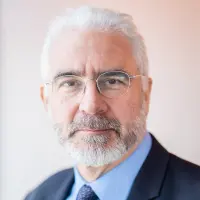Celebrating 30 Years of the European Institute: An Introduction

In the symbolism and language of ancient astrological understandings, planetary returns have a special significance, associated with the most telling life events. And perhaps none more so than the "Saturn return", the slowest, taking 28 or 29 years to return to its original position. Saturn’s first return is about reaching maturity – both for human beings and for institutions.
The European Institute (EI) has recently celebrated its 30th year, so we have taken the opportunity of a (decimalised) saturnine stock taking. The EI emerged in a time of upheaval and new beginnings for Europe, and, as Nick Barr’s contribution illustrates, its first faltering steps tracked Europe’s own turbulent fortunes. What has emerged is the ability of the EI to cultivate both diversity and harmony. We are a deeply multidisciplinary department – a good example of the "unity in diversity" that the EU has itself long aimed to attain.
In some ways, the situation we face today in Europe is not new. In 1919, in the wake of the First World War, the French poet and essayist Paul Valéry looked over the ruins of the post-War European world, standing witness not just to the death of millions of people, but also to "the death of truths". The former returned with a vengeance in the Second World War – but the latter is still with us in the form of "fake news". In tackling fake news, the EI’s tradition has not been truth, but truths. A child’s paint pot always ends up a muddy brown, whatever the picture – we avoid that. As Kevin Featherstone notes in his contribution, the EI finds its coherence today through the distinctive range of its masters degrees: three degrees with an interface with politics – the interface between culture and politics; the interface between policy and politics; and the interface between economics and politics – and one thematic degree, on migration, which draws these dimensions together. The mix is ambitious and the blends rich, but the colours remain clear.
The EI has managed to develop in ways that promote diversity and harmony simultaneously, and the three pieces presented here illustrate both – and hence offer a richer encapsulation of the EI than a single standardised (and hence more anodyne) piece. The three contributions cover the distinctive historical context of the EI’s birth in 1991-92 (Professor Simon Glendinning); its first decade (Professor Nicholas Barr); and its maturation (Professor Kevin Featherstone). We hope they show that, among the survivors, the EI has every chance to live to see its second Saturn return – and to take an equally decisive stand on that occasion too.
What has emerged is the ability of the EI to cultivate both diversity and harmony. We are a deeply multidisciplinary department – a good example of the "unity in diversity" that the EU has itself long aimed to attain.
Discover our anniversary blogs

The Birth of the European Institute at LSE: A Tale of Two Histories
by Professor Simon Glendinning

The European Institute’s First Decade
by Professor Nicholas Barr

Reflections on the Development of the European Institute at LSE
by Professor Kevin Featherstone